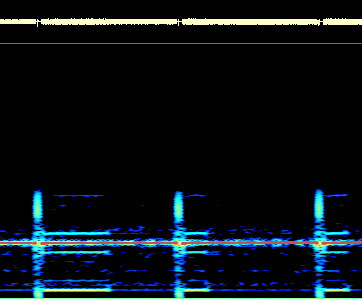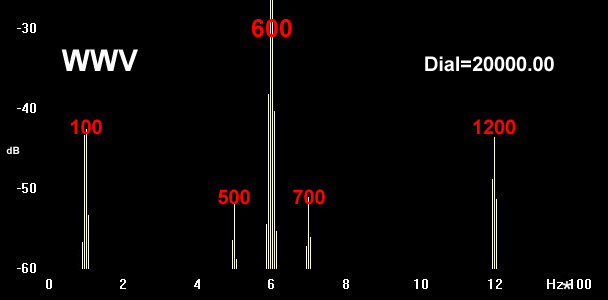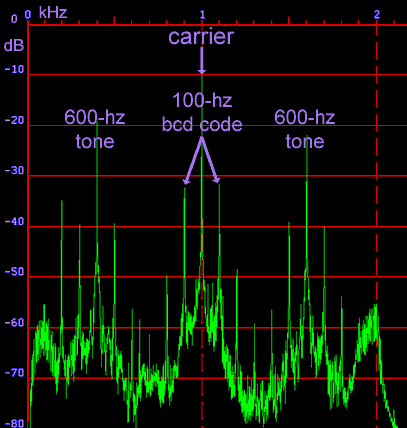WWV Time Signals


WWV's atomic precision can really show up equipment and propagation.
In our top view, the standard 600-Hz tone is clearly seen as a bright red line, interrupted briefly for the standard time interval ticks. When this tone leaves Boulder, it's so accurate that it can be digitally counted down to 60 and used as a reference to synchronize electric generators. I don't know if this particular received signal is good enough for that, but thanks to excellent band conditions it's pretty good. The amplitude at the top shows absolutely no fading, the noise has completely quieted, and there is no wavering from ionospheric flutter.
Look closely at the amplitude around the ticks. In two of the three, the tick is visible, as is the muting of the tone around it. The longer silence after the tick is real. That's how WWV sends it.
I opened up the audio bandwidth to show the yellow lines down at the bottom. These are the 100-Hz pulses which transmit the time and other information in a binary-coded decimal format readable to computers. One pulse is sent per second. Short pulses are binary zeroes, longer pulses are ones. The time ticks themselves show as transient pulses centered on 1000 Hz. Everything else is distortion.

This distortion shows up even better in the time-integrated amplitude/frequency run. Especially dramatic are the IM products 100 Hz above and below the loud 600-Hz tone, which are a direct result of mixing with the 100-Hz. All this is down something like 20 dB, and another mix producing an 1100-Hz tone was too low to see here. Not that bad for HF.

In this run, the AM carrier (with BFO on) was placed on 1000 Hz and the analyzer set to peak-hold. The 100-Hz code shows up either side of carrier, as does the 600-Hz tone and the various IM products. Assymetry is caused by selective fading.